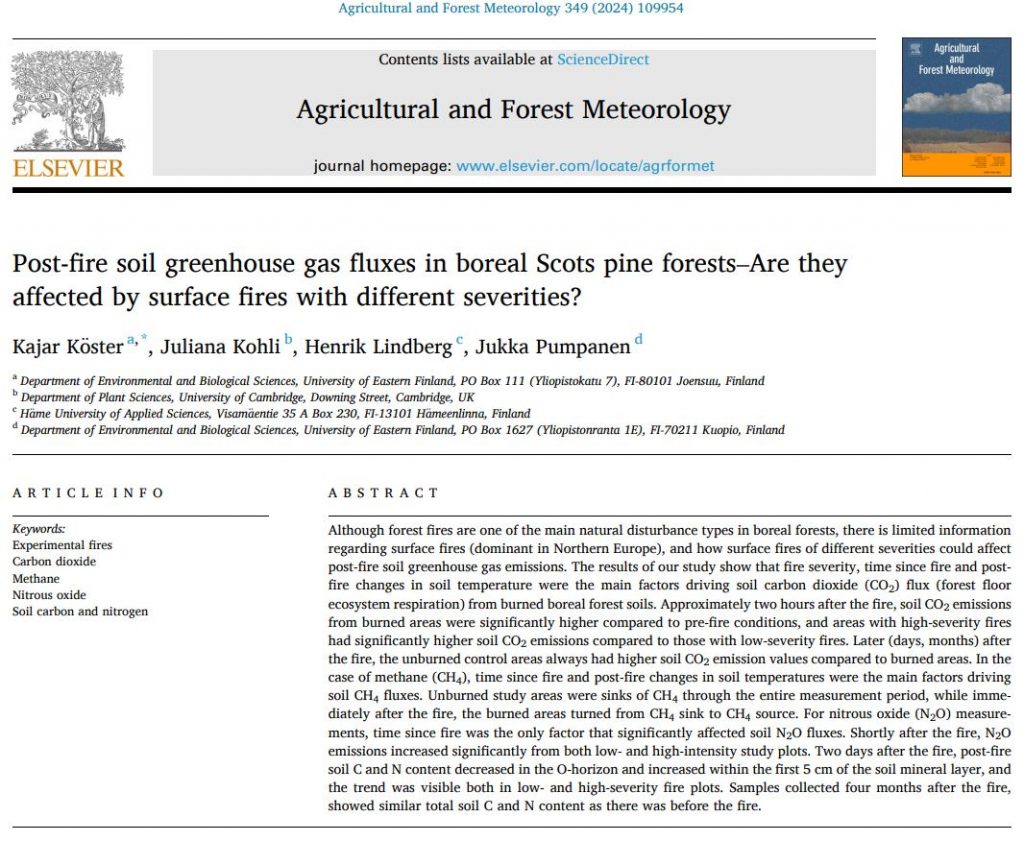Post-fire soil greenhouse gas fluxes in boreal Scots pine forests–Are they affected by surface fires with different severities?
A new paper by Köster et al (2024) gives information regarding surface fires (dominant in Northern Europe), and how surface fires of different severities could affect post-fire soil greenhouse gas emissions. The results of the study show that fire severity, time since fire and post-fire changes in soil temperature were the main factors driving forest floor ecosystem respiration (soil CO2 flux) from burned boreal forest soils. In the case of CH4, time since fire and post-fire changes in soil temperatures were the main factors driving soil CH4 fluxes from burned boreal forest soils. Unburned study areas were sinks of CH4 through the entire measurement period, while immediately after the fire, the burned areas turned from CH4 sinks to CH4 sources, and areas with higher fire severity showed significantly higher CH4 emissions compared to areas with lower fire severity. For N2O, measurement time (time since fire) was the only factor that significantly affected soil N2O fluxes. Shortly after the fire, the N2O emissions increased significantly, but at later stages of post-fire succession, there was no difference between the N2O fluxes from both unburned and burned areas. Throughout the entire summer measurement period (until the end of August), all areas were acting as a source of N2O, but from September, all areas turned from N2O sources to N2O sinks. We also observed an increase in post-fire soil C and N content (two days after the fire) within the first 5 cm of the soil mineral layer, showing that after the fire disturbance, part of the pyrogenic material created during the combustion is transported quickly through different soil horizons in the form of C and N.
